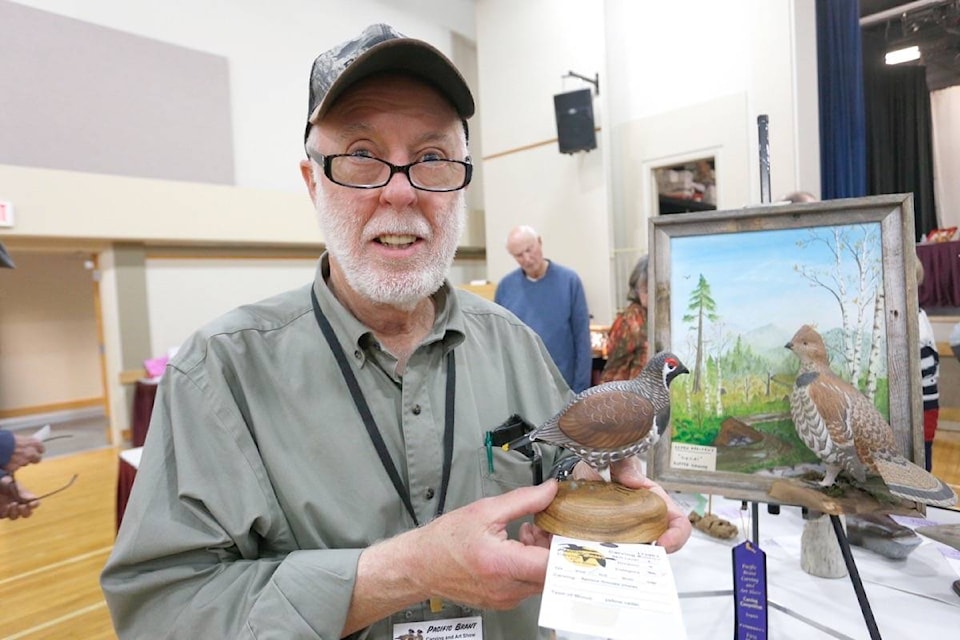Some people might look at a block of wood and only see a block of wood, but others see a bird in there.
It could take 30 or 40 hours of work to coax the bird out, though.
After decades honing his craft, Parksville resident Barry Saunders has become an expert in carving and painting wood to the point where it looks like it might just spread its wings and fly off. Making your carving as lifelike as possible is one of the main goals, he said. And that’s not just about having a wildly detailed paint job. It includes using the right colours for the given species, and giving the the carving the right proportions. In the case of decoys, also make sure they float right.
But the secret to getting there isn’t that big of a secret. “Practise, practise, practise, that’s about all I can say,” said Saunders, who competed in the Pacific Brant Carving and Art Show on Saturday and Sunday, April 8 and 9.
“It’s not just the carving or the painting, it’s also getting the experience of knowing what will work and what won’t and testing it,” he said.
Saunders became a carver after a 30-year career as a wildlife biologist in Ontario and B.C. “After I retired, I thought, ‘You know, I’m interested in many outdoor sports — fishing and hunting and that.’ I thought, ‘I think I’ll carve myself some decoys,’ so I started fiddling around, learning to carve by myself.”
Almost 10 years later he joined the Oceanside Carvers, and found a wealth of experienced members willing to share their expertise.
“Most of the carvers are quite willing to share whatever knowledge they have with others that are interested,” said Saunders, adding he’s continuing the tradition with some other members of the club.
Now, Saunders spends significantly more time carving than he does hunting. “Hardly a week goes by I’m not carving something.”
And that’s the way to improve, he said. So long as you keep learning, everything else is about more and more practice.
When he first started out, Saunders said just getting the shapes of his birds symmetrical was a challenge, and then carving them into realistic shapes was another.
The first order of business when carving is getting comfortable with your tools, whether that’s power tools or hand tools, he said. After that, major skills to learn include detail painting and how to use an airbrush.
Now, to complete a decoy, Saunders spends about 20 to 40 hours. “On some very intricate ducks, I’ve spent 85, 90 hours,” he said, adding that he knows of a carver at the Canadian nationals competition this year that has been painting a Canada Goose for more than three years.
Saunders has been carvings birds and mammals competitively since 2004.
